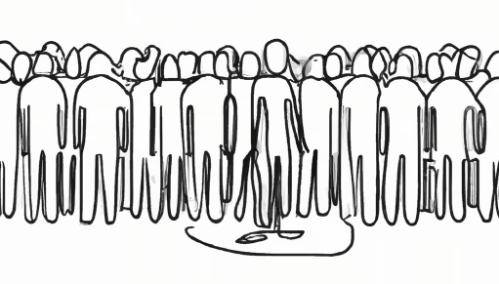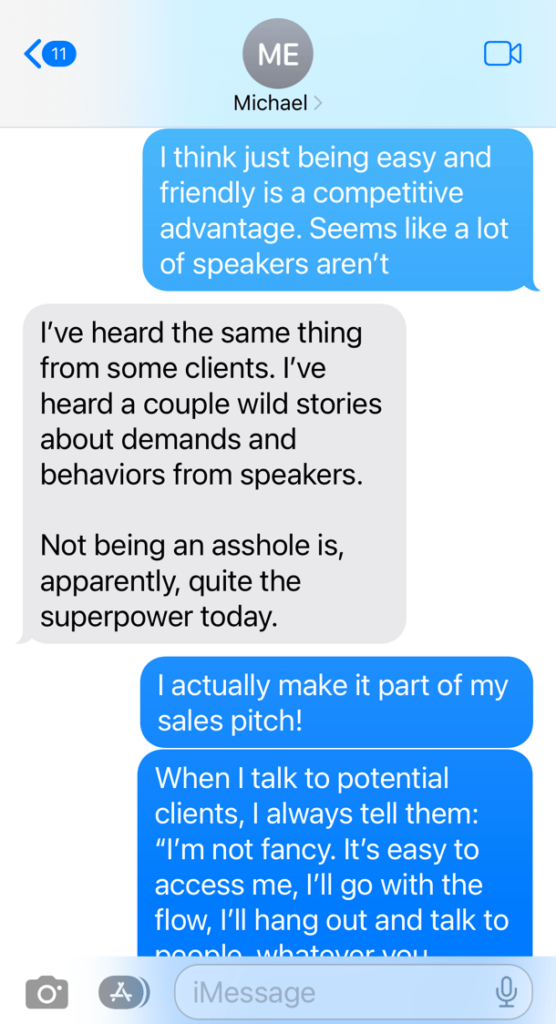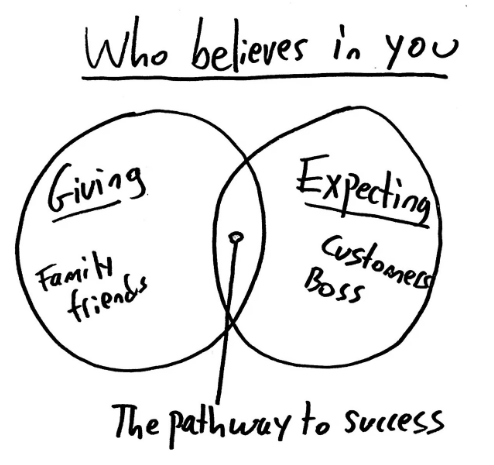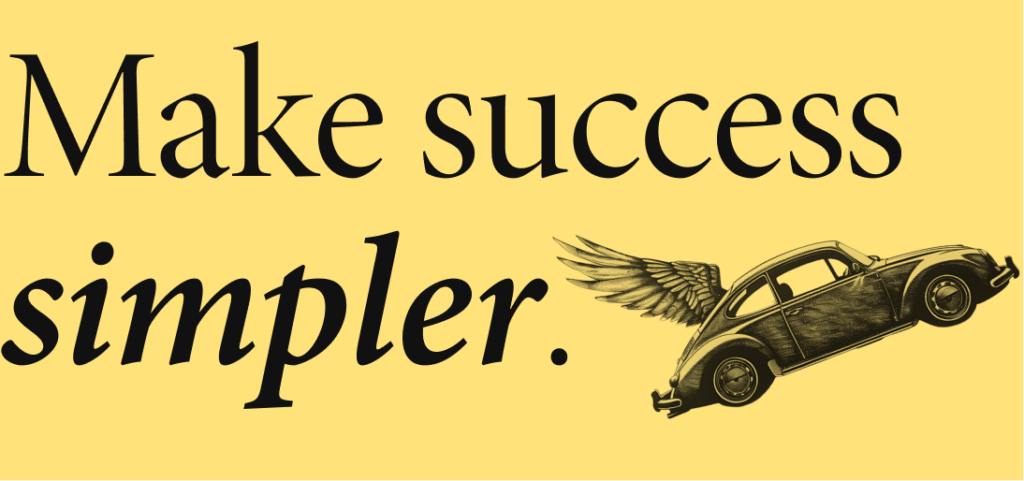Welcome to One Thing Better. Each week, the editor in chief of Entrepreneur magazine (that’s me) shares one way to be happier and more effective at work — and build a career or company you love.
👉 Read to the end for some tough-love feedback I got — and a lesson about how to find the most unexpectedly useful people in your life.
Today’s one thing: Competing against everyone.
That one thing, better: Doing what they don’t.

You’re trying to stand out — and it’s hard!
You have the right stuff: You’re talented, smart, and good at what you do.
But the right people aren’t noticing. Maybe it’s a boss. Or a customer. Or just someone you like.
So here’s a terrible truth you must take seriously:
You are a high-quality person, but you can’t compete on quality alone.
Today, I’ll show you how to get noticed another way. And I’ll start with a guy I once hired… because he did what none of his competitors would.
What’s your competitive advantage?
A few years ago, I got locked out of my office. I tried to break in, but it turns out I’m a bad burglar. So I needed a locksmith.
I found a bunch of locksmiths on Yelp and asked them for quotes. Four replied quickly.
The first simply wrote: “Price estimate: $29. I give you best price.” The second wrote: “$125 to open the door.” The third just wrote: “Yes, we can help you.”
The fourth came from a guy named Jay Sofer, owner of Lockbusters, who wrote me this: “Hi, Jason, thank you for the detail. Would it be possible to send me a quick image of that handle to make certain I give you an accurate quote? Here is my direct email address.”
Jay and I went back and forth a few times, where he asked for photos to identify the exact problem. Then he gave me an estimate: It was $300, a full $271 more than the “I give you best price” guy.
I hired Jay. Why? Because he felt the most trustworthy.
And as I’d come to learn, that wasn’t by accident. Trust is Jay’s entire business model.
What if trust is a competitive advantage?
I’ll tell you more about Jay in a moment, but first: Let’s return to what I said at the beginning.
You are a high-quality person, but you can’t compete on quality.
That’s an idea inspired by Matt O’Toole, the former president and CEO of Reebok. We met a few years ago, and he told me: Companies can’t compete on quality alone.
Why? Because in our world of top-notch manufacturing, quality is easily achieved. Imagine you launch a new brand of scissors. You can’t advertise it as the “sharpest scissors,” because that’s absurd. Every pair of scissors is the sharpest scissors!
That’s why you need to compete on something else. For brands, it’s often a combination of story, branding, design, and price.
Upgrade your subscription, get even more value!
But this applies to people too. No matter what you’re good at, many other people are good at it too. I mean, I fancy myself a good writer — but am I the best writer? No. I’m one of many.
So it’s worth asking yourself: What else sets you apart?
If you’re stumped, start experimenting. Go out of your way to help others. Share your ideas in unique ways. Then look for the moments when someone says: Oh, wow. Because that’s when you’ve done something others won’t.
You will be shocked at what impresses people. For example…
How I increased my sales (by being nice)
About a year ago, a company emailed me with a request: They were considering me for a keynote role at their upcoming event, but first wanted to talk and see if I’m the right fit.
No problem, I said. We spoke the next day for 30 minutes. At the end, they told me: “Most speakers don’t take calls like this. They just send it to their agent or assistant. So we’re really grateful you took the time to understand us.”
Then they hired me.
I learned a valuable lesson there: My competition is less hands-on than I am. Accessibility can be a competitive advantage.
I was texting about this recently with my friend Michael Easter, best-selling author of the book The Scarcity Brain and a fantastic newsletter about health and performance. He and I often swap ideas about the speaking business. Check out this exchange — I’m the blue bubble:

Honestly, this is absurd. Being nice? Easy? Not an asshole? To me, these are the basics. But in reality, they’re what other people overlook.
And that’s exactly what Jay the locksmith figured out too.
When he first entered the locksmith industry, he looked at how others operated. “Prices and communication are usually vague in an effort to overcomplicate the process,” he told me. Locksmiths will say whatever it takes to get your business — and then jack the price once they’re at your door.
Jay didn’t want to compete against that. Then he realized he didn’t have to. “The idea I had was to position myself as the good guy,” he told me. Trust would be his competitive advantage.
This meant he’d be nicer than the competition. Ask more questions. Be more personable. And it worked. Jay’s business boomed — because people recommend him and always leave great reviews on Yelp. (I did too!)
So, what’s your true advantage?
Spend some time with this question. Trust is a great place to start. But maybe it’s also your clear and compelling viewpoint. Your friendliness. Generosity. Response time. Reliability.
Ultimately, this is a question of where you find your joy. How do you like to connect with people? How do you like to show up for people? Jay knows his answer: “I enjoy helping people and consider it a privilege,” he told me.
When you think that way, competition doesn’t feel like competition at all. If feels like an opportunity to be you.
That’s how to do one thing better.
Bonus tip + personal update
The most important people you can meet

I just drew this chart. It’s a realization that smacked me in the face: To grow, you must to find the rare people who live at the intersection of giving and expecting.
To explain, I’ll first show you some tough love I just got.
In last week’s newsletter, I wrote very honestly about failure — my failure. My premium newsletter launch wasn’t as strong as I’d hoped, but I found a way to make failure feel purposeful. I wanted to help others find that purpose in their own failures too.
I got dozens of responses — so many that I haven’t had time to read them all. (If you wrote: Thank you, and I promise you will hear back from me.) People told me of their own failures. Of their own realizations. And many had useful feedback about my newsletter.
One of the most impactful emails came from Rawi Nanakul, who writes a newsletter about ADHD and working in the tech industry. He upgraded to my premium edition, then told me why:
I believe that at some point I will get a return on my investment. I don’t know how yet but I have faith that you will 10x my investment at some point. I hope it comes in a way both don’t expect it to.
Rawi said my newsletter is “useful” to him, which I liked to hear — but then he stopped me cold. He doesn’t pay for things to be useful, he said. He pays for things to solve his problems.
He used Lenny’s Newsletter as an example. It’s a popular newsletter for product developers. Rawi pays for it, but truth be told, he can barely keep up with all of Lenny’s content. Instead, Rawi pays because it gains him access to a Slack group with other subscribers / product developers. That is what solves Rawi’s problems.
Then Rawi issued me a challenge:
I’m not advocating for you to start a slack community. Rather I encourage you to think about how you want to help solve the daily pain of a reader.
How you want to transform your paid product from “useful weekly” to “needed daily”.
I think that’s how you’ll find your positioning and product.
I believe that you will find that answer so strongly that I paid upfront for the year.
Prove my 10x hypothesis right.
This email made me realize two things:
1. Rawi is right. He has lit a fire in me.
2. If you want to create something great, you need to find Rawis.
And who are Rawis? They are the people at the intersection of “Giving” and “Expecting.” That’s the Venn diagram I drew above. Most people fall into one category, but only a small number fall into the overlap — and they may not stay there long! Rawi gave me a year, for example.
So how do you find them? And what do you do with them? That’s the subject of my next Premium newsletter, which comes out on Friday.
The group there is still small, so I’m investing in getting to know them more — including hopping on the phone with many, so I can learn more about their needs and hopefully offer some early solutions. Rawi and I are scheduling a call now. (If you’re in Premium and reading this, don’t worry: You’ll hear more about this soon!)
Want to get in? All you have to do is upgrade now!
Thanks, and happy Thanksgiving.
